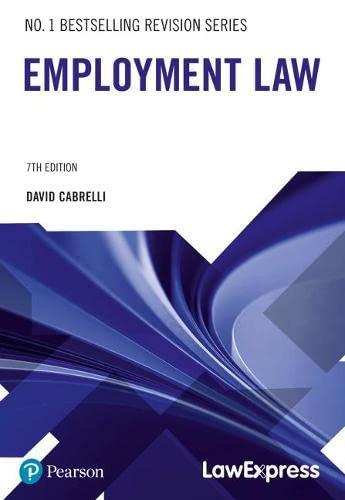Question
chapter 100 This paper concludes that there are new multi-stakeholder convened global governance frameworks evolving that are encouraging 110 businesses of the future to re-invent
chapter 100
This paper concludes that there are new multi-stakeholder convened global governance frameworks evolving that are encouraging 110 businesses of the future to re-invent themselves as a 'force for positive good' in society. This involves going beyond the paradigm of simply 'doing no harm', and way beyond previous expectations of business as being only about shareholder value. This prediction is supported by examples drawn from the practice of global companies that are already innovating to fulfil this wider role.
This article compares the survival strategies used by the founders of family and nonfamily businesses in the hostile economic environment of Lithuania. In this exploratory study, six firms were studied in depth: three family firms and three nonfamily firms. These firms were in that sector of the Lithuanian economy designated as "light industry." The major strategies used by founders to keep their firms viable include (1) developing social capital to gain favor with local authorities and important customers and suppliers and (2) using family networks to gain access to human and financial capital. The family businesses appeared to be more successful than the nonfamily enterprises. Moreover, the ability to draw on family resources seemed to be the predominant reason for their modest success.
Question 1
How can gabapentin and carbamazepine act with a cervical disc
prolapse?
Question 2
Do patients with cervical spondylosis, experiencing neck pain and
stiffness, benefit from putting on a neck collar? If so, for how long should
the collar be worn?
Question 3
What is indicated by a straightening of the lumbar spine with a
loss of normal lordosis, and is there any relation to ankylosing
spondylitis?
Question 4
Can cervical spondylosis cause hypertonia in one upper limb?
Question 5
Should a female patient, with mild congestive cardiac failure,
microalbuminuria and cervical spondylosis receive IV vitamin D/
analogues? Would this not increase the risk of calcium stones owing to
the mild renal impairment? Would oral vitamin D be preferable?
Question 6
What is the recommended treatment for spinal canal stenosis? Do
carbamazepine or vasodilators have a role to play in its treatment?
Question 7
What technique is used for injecting steroids locally in the case of carpal
tunnel syndrome?
Question 8
In a patient who has sustained an anterior cruciate ligament (ACL) knee
injury and whose pain and swelling have subsided on conservative
treatment, what are the chances of complications (e.g. osteoarthritis,
fibrosis) from the torn ligament. Will the patient be able to lead a
normal life?
Question 9
Is either gapapentin or carbamazepine effective in the treatment of
meralgia paraesthetica?
Question 10
What is the clinical differentiation between Dupuytren's contracture and
ulnar nerve palsy? Is it the absence of sensory deficit in the former? Are
there any other differentiating factors?
Step by Step Solution
There are 3 Steps involved in it
Step: 1

Get Instant Access to Expert-Tailored Solutions
See step-by-step solutions with expert insights and AI powered tools for academic success
Step: 2

Step: 3

Ace Your Homework with AI
Get the answers you need in no time with our AI-driven, step-by-step assistance
Get Started


